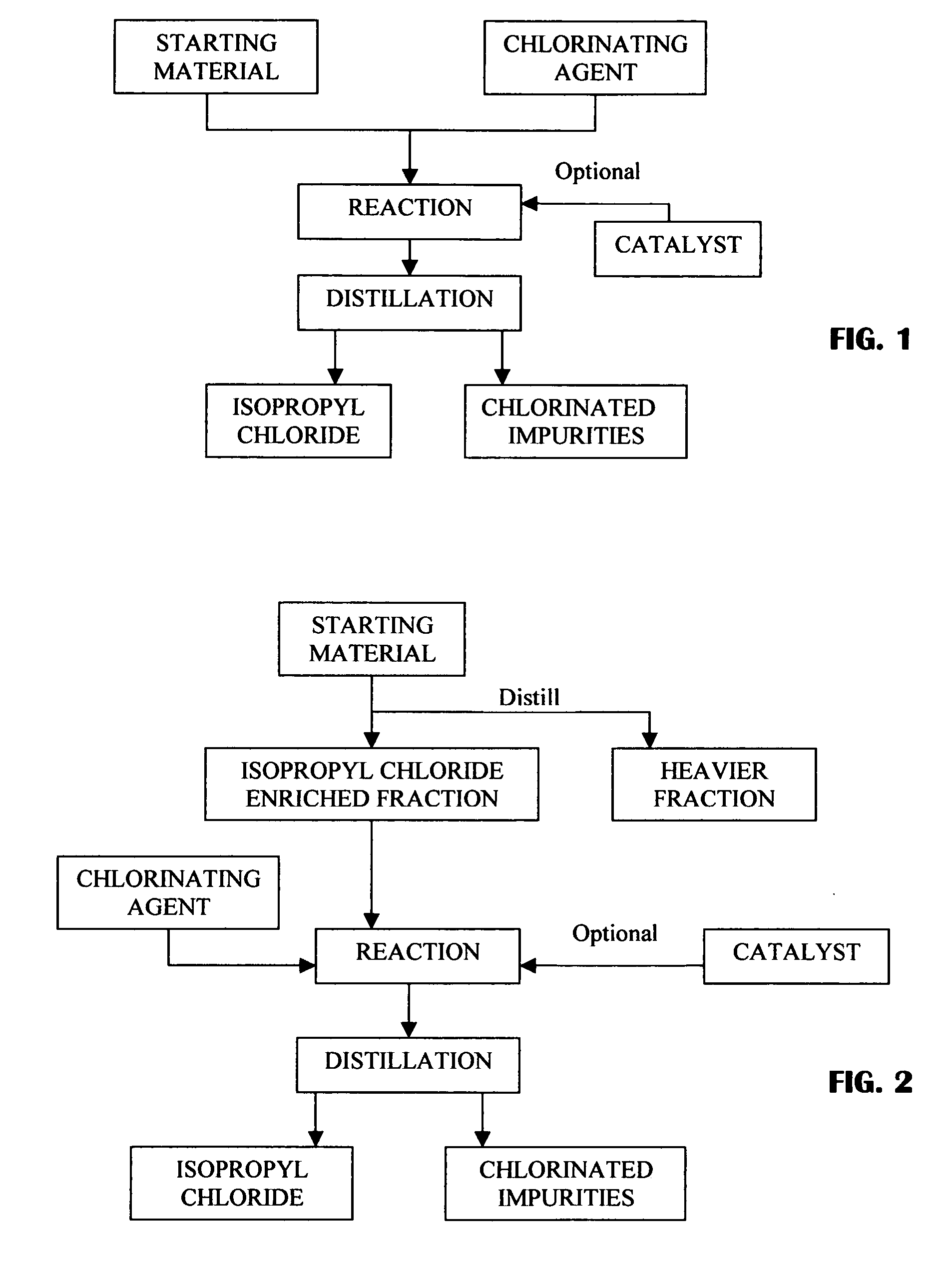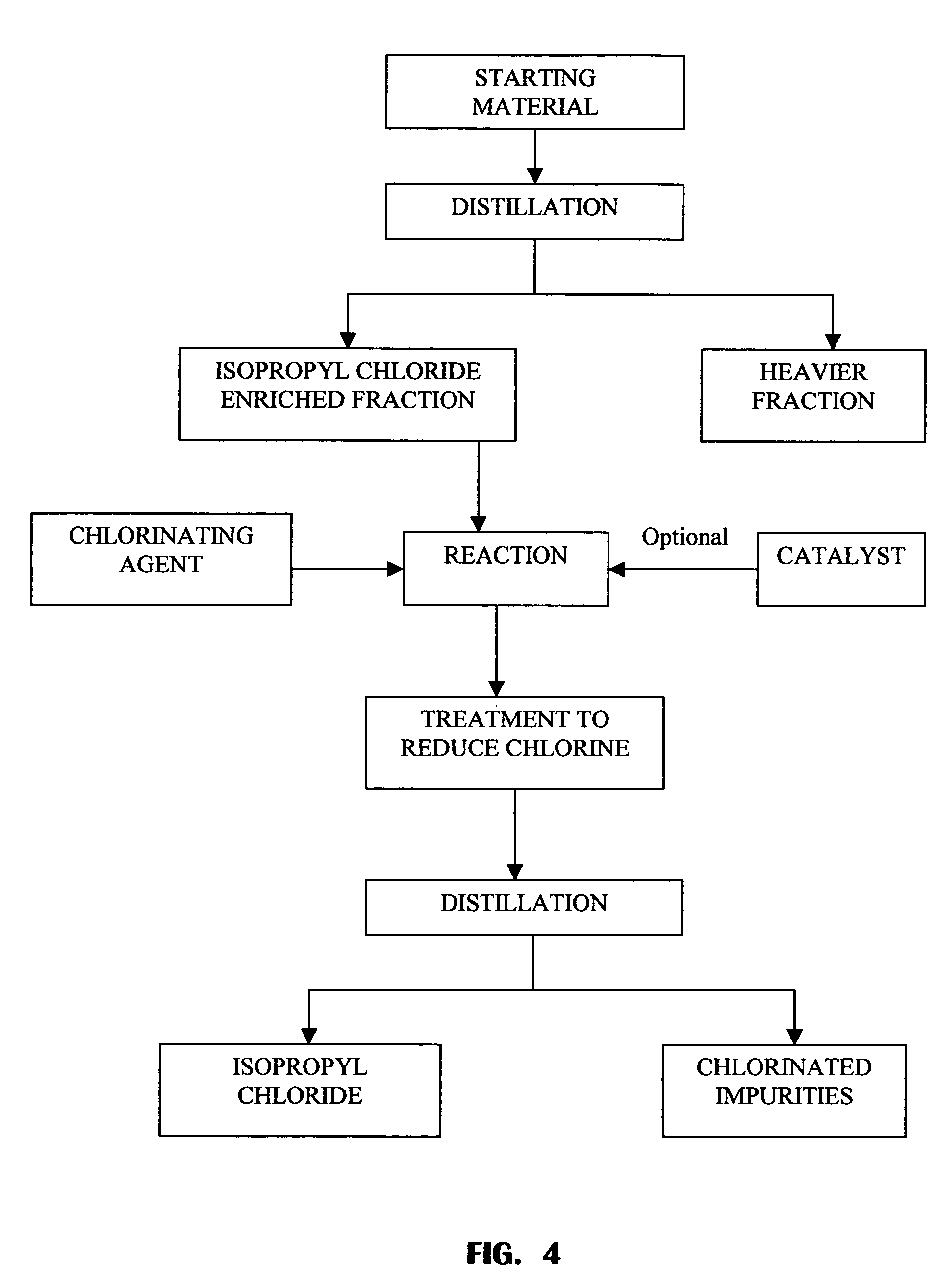Method for producing isopropyl chloride for use as a foam-blowing agent
a technology of isopropyl chloride and foam blowing agent, which is applied in the preparation of halogenated hydrocarbons, chemistry apparatus and processes, organic chemistry, etc., can solve the problems of difficult separation of monochloropropenes from isopropyl chloride by simple distillation, and the efficiency of absolute processes may be less economical
- Summary
- Abstract
- Description
- Claims
- Application Information
AI Technical Summary
Problems solved by technology
Method used
Image
Examples
Embodiment Construction
[0037] The following composition is an example of a low-grade feedstock:
[0038] Propylene=1.5 wt %
[0039] Isopropyl chloride=38.6 wt %
[0040] Chloropropene isomers=6.9 wt %
[0041] 1-chloropropane=2.0 wt %
[0042] Dichloropropane=49.9 wt %
[0043] Miscellaneous heavy ends=1.1 wt %
[0044] This composition is continuously fed to an agitated, jacketed, glass lined reactor. A chlorinating agent such as chlorine is continuously fed to the reactor. The chlorine feed rate is 105 mole percent of the olefin feed rate to the tower (5% excess chlorine). The olefins are propylene and chloropropene isomers shown in the composition example for low-grade feedstock. Reactor temperature is maintained at 38.degree. C., by circulating tempered water through the reactor's jacket. Reactor residence time is 5.2 hours.
[0045] At these conditions, 99.1% of the chlorine fed to the reactor is consumed. Chloropropene isomer conversion is 99.9%. Isopropyl chloride losses, due to substitution reactions, are 9.9%. Reactor ...
PUM
 Login to View More
Login to View More Abstract
Description
Claims
Application Information
 Login to View More
Login to View More - R&D
- Intellectual Property
- Life Sciences
- Materials
- Tech Scout
- Unparalleled Data Quality
- Higher Quality Content
- 60% Fewer Hallucinations
Browse by: Latest US Patents, China's latest patents, Technical Efficacy Thesaurus, Application Domain, Technology Topic, Popular Technical Reports.
© 2025 PatSnap. All rights reserved.Legal|Privacy policy|Modern Slavery Act Transparency Statement|Sitemap|About US| Contact US: help@patsnap.com



